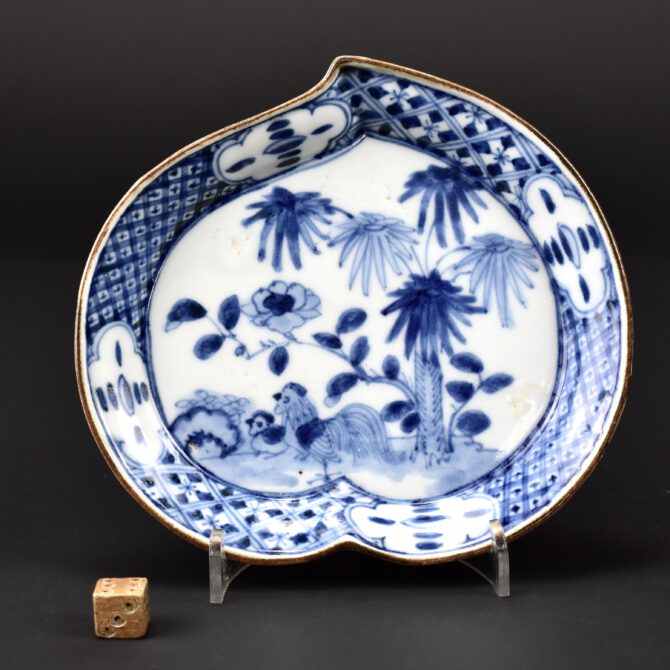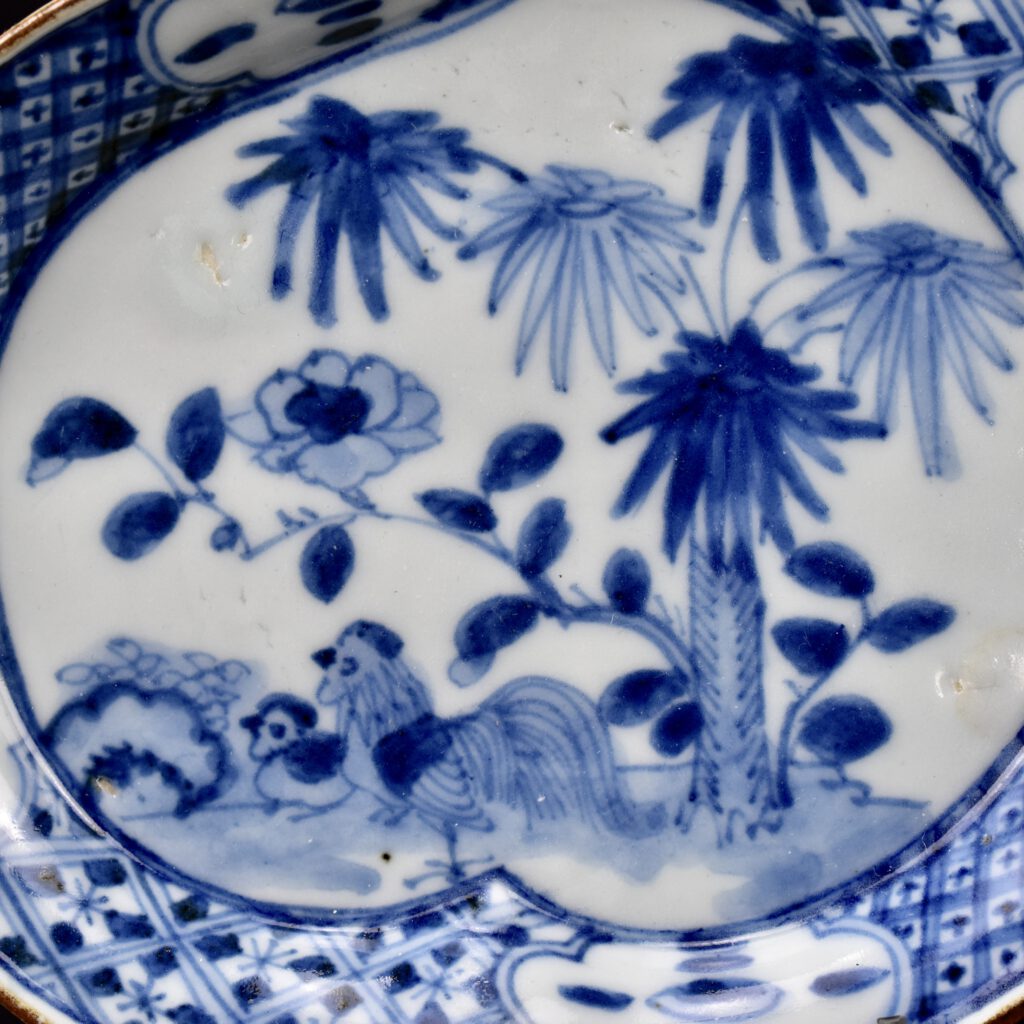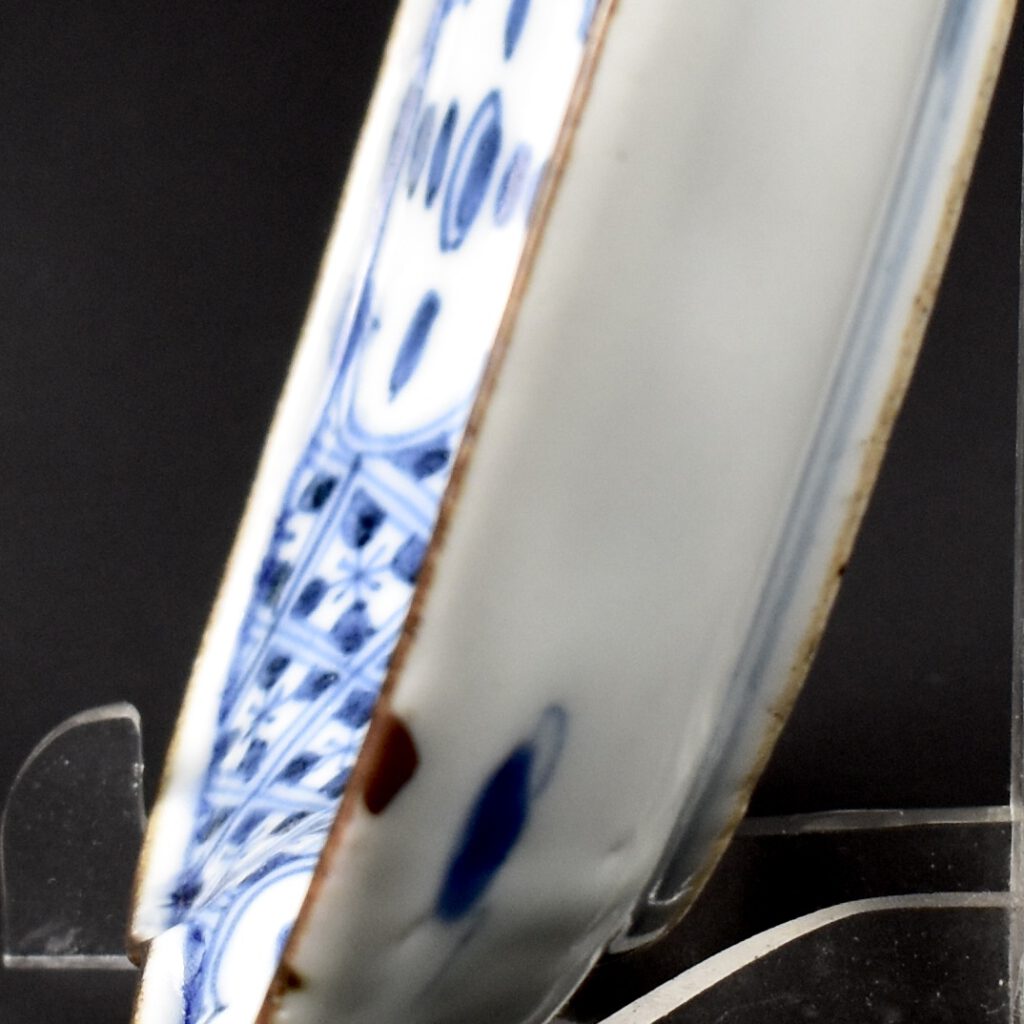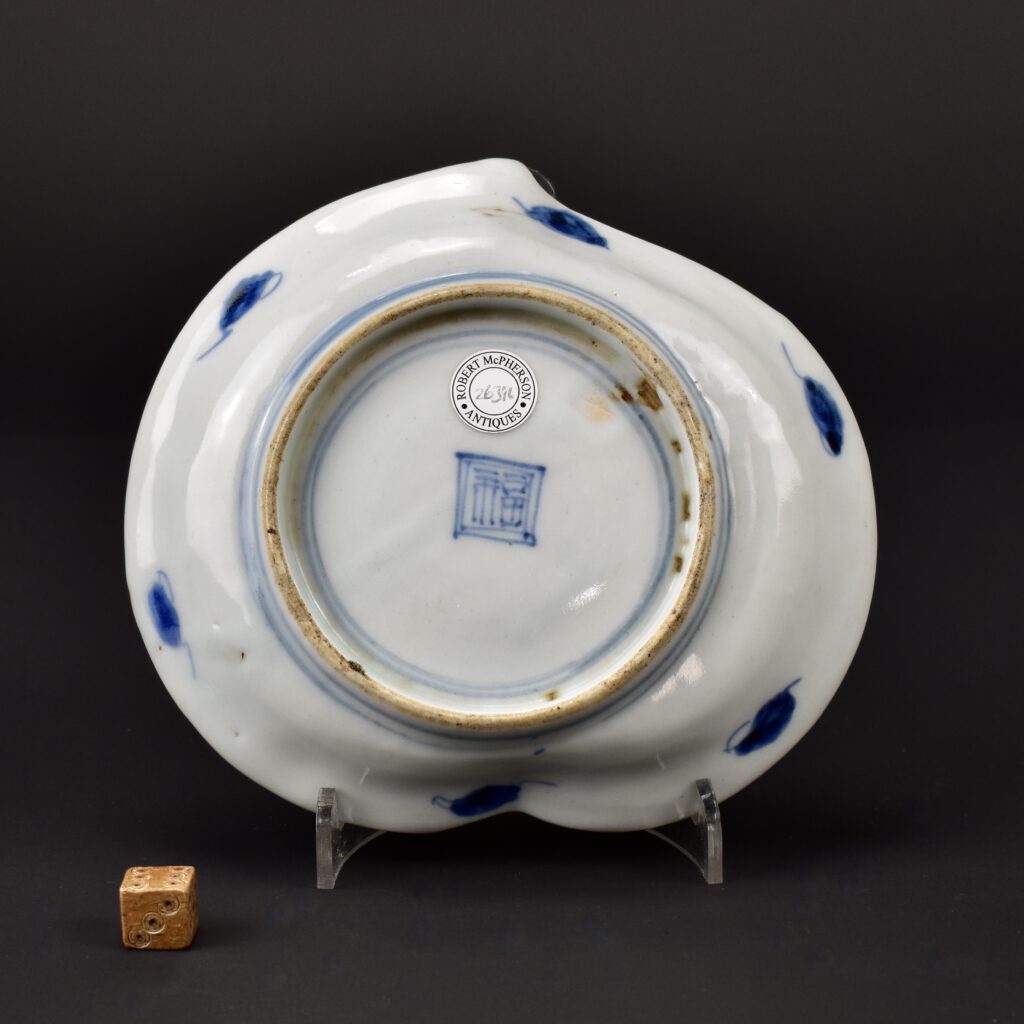
A Mid-17th Century Japanese Peach Shaped Porcelain Dish
A Mid 17th Century Japanese Porcelain Dish, Arita Kilns c.1640 – 1655. This thickly potted Ko-Imari (old imari) peach shaped serving dish was made for the Japanese market. The central scene of this dish is painted with a cockerel and a hen in a landscape The asymmetrically border has diaper patterns, including checkerboard. Three four cartouches that are symmetrically placed. The rim is dressed with iron-rich glaze called Fuchibeni. The back is decorated with a repeated design, but I don’t know what it is meant to be. The base has a square seal-mark.
SOLD
See below for more photographs and references.
- Condition
- In good condition ; a small Kintsugi, ‘golden joinery’, also known as Kintsukuroi ‘golden repair’ is the Japanese technique of repairing broken pottery with lacquer dusted or mixed with powdered gold, silver or platinum.
- Size
- Diameter 13.4 cm (5 1/3 inches). Width 14.6 cm (5 3/4 inches). Depth 2.7 cm (1 inch).
- Provenance
- N/A
- Stock number
- 26396
Information
Kintsugi
Kintsugi, ‘golden joinery’, also known as Kintsukuroi ‘golden repair’ is the Japanese technique of repairing broken pottery with lacquer dusted or mixed with powdered gold, silver or platinum. As a philosophy, it treats breakage and repair as part of the history of an object, rather than something to disguise. Lacquerware is a longstanding tradition in Japan, and at some point kintsugi may have been combined with maki-e as a replacement for other ceramic repair techniques. One theory is that kintsugi may have originated when Japanese shogun Ashikaga sent a damaged Chinese tea bowl back to China for repairs in the late 15th century. When it was returned, repaired with ugly metal staples, it may have prompted Japanese craftsmen to look for a more aesthetic means of repair. Collectors became so enamored with the new art that some were accused of deliberately smashing valuable pottery so it could be repaired with the gold seams of kintsugi. Kintsugi became closely associated with ceramic vessels used for chanoyu (Japanese tea ceremony). While the process is associated with Japanese craftsmen, the technique was also applied to ceramic pieces of other origins including China, Vietnam, and Korea.







